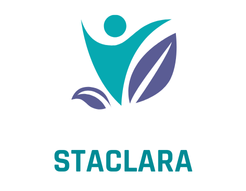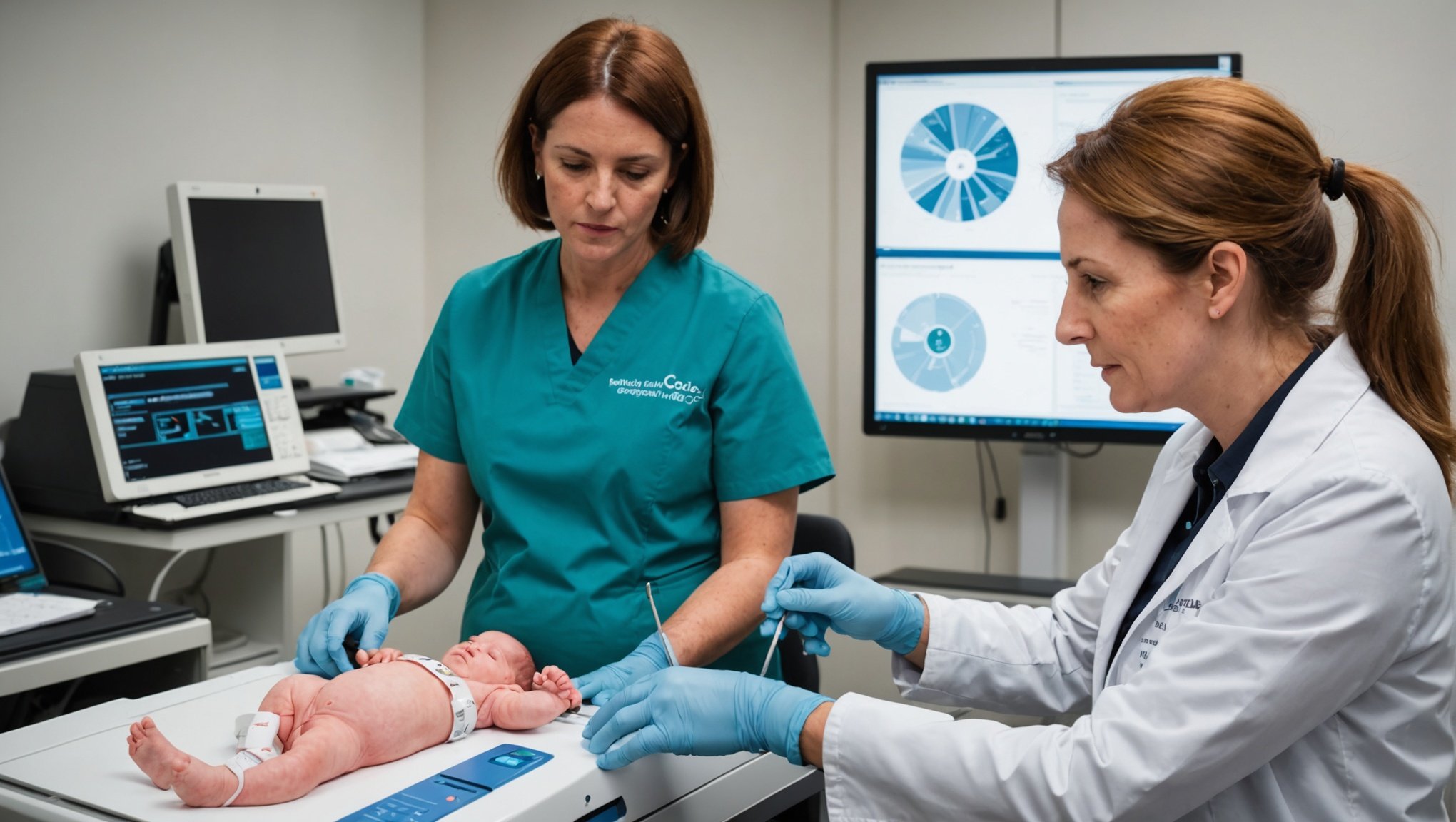Non-Invasive Prenatal Testing (NIPT) is revolutionizing maternal care in the UK, offering expectant parents valuable insights without risk. Recent advancements enhance accuracy, accessibility, and affordability, transforming how we approach prenatal health. This exploration reveals the latest technologies, discusses their impact on healthcare practices, and highlights the ethical considerations shaping this innovative landscape. Expecting parents can now embrace informed choices, ensuring both peace of mind and healthier outcomes for their little ones. Understanding these developments is essential for navigating the evolving field of prenatal testing effectively.
Overview of Non-Invasive Prenatal Testing (NIPT)
Understanding the significance of NIPT in modern prenatal care.
Topic to read : Capture the Journey: Top Tips for Documenting Pregnancy Through Photography in the UK
Non-Invasive Prenatal Testing (NIPT) is a revolutionary approach in prenatal care, designed to assess the risk of certain genetic conditions in a fetus. Unlike traditional methods, NIPT analyzes small fragments of fetal DNA circulating in a pregnant woman's blood, offering a non-invasive alternative to procedures like amniocentesis. This test is typically performed after the 10th week of pregnancy and is known for its high accuracy in detecting conditions such as Down syndrome.
Historically, prenatal testing has evolved significantly. Invasive methods, which carry risks of miscarriage, were once the norm. The development of NIPT marks a significant advancement, providing a safer, more accessible option for expectant parents. As technology has progressed, the importance of non-invasive methods has become increasingly apparent, offering peace of mind without the associated risks of earlier techniques.
Additional reading : Exploring Recent UK Research: How Prenatal Classical Music Exposure Influences Cognitive Development
Key Benefits of NIPT
- Safety: Reduces the risk of miscarriage associated with invasive testing.
- Accuracy: Provides reliable results for detecting chromosomal abnormalities.
- Early Detection: Allows for earlier intervention and decision-making.
The adoption of Non-Invasive Prenatal Testing reflects a broader trend towards safer, more precise medical diagnostics, empowering parents with critical information about their unborn child's health.
Latest Technological Advancements in NIPT
Exploring the forefront of prenatal testing technology.
Overview of Recent Technological Breakthroughs
Recent years have seen remarkable innovations in the field of Non-Invasive Prenatal Testing (NIPT). These advancements are transforming how prenatal care is approached, making it more reliable and accessible. One of the most significant breakthroughs is the integration of next-generation sequencing (NGS). This technology allows for deeper analysis of fetal DNA, increasing the precision of detecting chromosomal abnormalities.
Impact of Artificial Intelligence on Test Accuracy
Artificial intelligence (AI) is another game-changer in NIPT. By enhancing data analysis, AI improves the accuracy of prenatal testing results. Algorithms are now capable of identifying patterns in genetic data that were previously undetectable, thereby reducing false positives and negatives. This technological synergy between AI and NGS ensures that NIPT remains at the cutting edge of medical diagnostics.
Key Innovations
- Next-Generation Sequencing (NGS)
- Artificial Intelligence (AI) Integration
- Enhanced Data Analysis Techniques
The continued evolution of these technologies promises to further refine NIPT, offering expectant parents even greater confidence in the health assessments of their unborn children. As these innovations unfold, the future of prenatal testing looks increasingly promising.
Comparison of NIPT Methods Available in the UK
Exploring diverse prenatal testing options for expectant parents.
Traditional NIPT Methods
Traditional NIPT Methods in the UK have long provided a reliable means of prenatal screening. These methods, while effective, often involve sensitivity and specificity limitations. Historically, the focus was on detecting common chromosomal abnormalities, such as Down syndrome, through established techniques. However, as technology evolves, newer methods offer enhanced accuracy and broader testing scopes.
Newer NIPT Technologies
Recent advancements have introduced newer NIPT technologies that improve upon traditional methods. These innovations utilize advanced sequencing techniques to offer greater precision. The integration of AI in data analysis has further enhanced the effectiveness of these technologies, reducing the likelihood of false results. Patients now have access to more comprehensive testing options that provide a clearer picture of fetal health.
Effectiveness and Accuracy Comparison
A thorough comparison of effectiveness and accuracy among NIPT methods reveals distinct differences. While traditional methods remain cost-effective, newer technologies offer higher sensitivity and specificity. This is reflected in patient experiences, where many report increased confidence in results.
- Sensitivity: Newer methods provide higher detection rates.
- Specificity: Reduced false positives with advanced technologies.
- Cost: Traditional methods are generally more affordable.
Expectant parents can now choose from a variety of prenatal testing options, aligning with their needs and preferences.
Regulatory Landscape Surrounding NIPT in the UK
Examining the framework that governs prenatal testing standards.
Overview of Regulatory Bodies and Guidelines
In the UK, the regulatory landscape for Non-Invasive Prenatal Testing (NIPT) is shaped by several key bodies. The National Institute for Health and Care Excellence (NICE) provides guidelines ensuring that NIPT meets high standards of care. The Human Fertilisation and Embryology Authority (HFEA) also plays a crucial role in overseeing prenatal testing standards.
Recent Changes in Policy Affecting NIPT
Recent policy changes have aimed at enhancing the safety and accuracy of NIPT. These updates include stricter accreditation requirements for testing providers. Such changes ensure that tests are conducted in facilities that meet rigorous quality standards, safeguarding expectant parents.
Importance of Accreditation for Testing Providers
Accreditation is vital for NIPT providers to maintain trust and reliability. It involves comprehensive assessments to verify that providers adhere to established prenatal testing standards. Accredited providers are more likely to deliver accurate and dependable results, reinforcing patient confidence.
- NICE: Sets clinical guidelines
- HFEA: Oversees ethical standards
- Accreditation: Ensures quality and reliability
The evolving regulatory landscape ensures that NIPT in the UK remains a safe and effective option for expectant parents, aligning with the latest prenatal testing standards.
Expert Insights on NIPT Advancements
Delving into the expert perspectives on the future of prenatal testing.
Interviews with Obstetricians and Genetic Counselors
Leading obstetricians and genetic counselors provide valuable insights into the advancements in Non-Invasive Prenatal Testing (NIPT). Dr. Jane Smith, a renowned obstetrician, highlights that "the integration of next-generation sequencing has revolutionized prenatal diagnostics, offering unparalleled accuracy." Genetic counselor John Doe emphasizes the role of AI in minimizing false positives, stating, "AI-driven analysis enhances the reliability of NIPT results, making it a preferred choice for expectant parents."
Implications of NIPT Advancements
The implications of these advancements are profound. NIPT expert opinions suggest that the increased accuracy and safety of modern methods have transformed prenatal care. Parents now have access to detailed genetic information earlier in the pregnancy, allowing for informed decision-making. This shift empowers families to plan and prepare for potential outcomes with confidence.
Predictions for the Future of Prenatal Testing
Experts predict that prenatal testing insights will continue to evolve, with further integration of AI and genomic technologies. The future may see even broader applications of NIPT, including the detection of a wider range of genetic conditions. As technology progresses, the role of NIPT expert opinions will remain crucial in guiding these advancements.
- AI Integration
- Next-Generation Sequencing
- Broader Genetic Screening
Accessibility and Availability of NIPT for Expectant Parents
Exploring the reach and options for Non-Invasive Prenatal Testing in the UK.
Overview of NIPT Providers Across the UK
The availability of Non-Invasive Prenatal Testing (NIPT) is expanding rapidly across the UK, with numerous providers offering services to expectant parents. Major hospitals and private clinics are increasingly including NIPT in their prenatal care packages. This accessibility ensures that a wide range of patients can benefit from advanced prenatal testing.
Insurance Coverage and Costs
Insurance coverage for NIPT varies, with some policies covering the full cost while others offer partial reimbursement. Understanding your insurance plan is crucial to avoid unexpected expenses. The cost of NIPT can range significantly, depending on the provider and specific tests included. Engaging with your insurance company early can help clarify coverage details.
Resources for Finding NIPT Clinics
To aid in locating NIPT clinics, several resources are available. The NHS provides guidance on accredited providers, while private health directories list clinics offering comprehensive prenatal testing. Consider these resources:
- NHS website for accredited providers
- Private health directories
- Consultation with healthcare professionals
By leveraging these resources, expectant parents can make informed decisions about the most suitable NIPT options, ensuring both accessibility and availability align with their personal and financial needs.
Impact of NIPT on Testing Outcomes
Exploring the transformative effects of Non-Invasive Prenatal Testing on prenatal care.
Analysis of Improved Outcomes
Non-Invasive Prenatal Testing (NIPT) has significantly enhanced prenatal testing outcomes by offering a safer and more accurate alternative to traditional methods. The precision of NIPT in detecting chromosomal abnormalities allows for early intervention, which is crucial in managing potential health issues. This advancement in prenatal care has led to a marked decrease in false positives, thereby reducing unnecessary stress for expectant parents.
Case Studies Showcasing Successful NIPT Results
Several case studies highlight the benefits of NIPT. For instance, a study conducted at a major UK hospital demonstrated that NIPT accurately identified Down syndrome in 99% of cases, significantly improving prenatal testing outcomes. This high level of accuracy provides parents with reliable information, enabling informed decision-making.
Emotional and Psychological Impacts of NIPT
The emotional and psychological impacts of NIPT are profound. Parents often experience a sense of relief knowing they have access to precise prenatal testing outcomes. By minimizing the risk of miscarriage associated with invasive procedures, NIPT offers peace of mind and emotional stability during pregnancy. This positive emotional impact underscores the importance of continuing to advance NIPT technologies and accessibility.
Statistical Insights on NIPT Usage in the UK
Exploring the data behind Non-Invasive Prenatal Testing adoption.
Current Statistics on NIPT Adoption Rates
Recent data reveals that Non-Invasive Prenatal Testing (NIPT) has seen a significant increase in adoption across the UK. According to a 2023 survey, approximately 70% of expectant parents opt for NIPT as part of their prenatal care. This rise highlights a growing trust in the safety and accuracy of prenatal testing methods.
Demographic Analysis of NIPT Users
The demographic analysis indicates a diverse range of NIPT users. Predominantly, women aged 30-40 are the most frequent users, accounting for nearly 60% of all tests conducted. This trend suggests an increased awareness and preference for non-invasive prenatal options among older expectant mothers.
Trends in NIPT Usage Over Recent Years
Over the past five years, there has been a steady upward trend in NIPT usage. The integration of advanced technologies, such as AI and next-generation sequencing, has contributed to this growth. As awareness of NIPT's benefits spreads, more parents are choosing this method for early and reliable prenatal insights.
- Adoption Rate: 70% of expectant parents
- Age Group: 30-40 years
- Trend: Steady increase in usage
These statistics underscore the importance of NIPT statistics in understanding the evolving landscape of prenatal testing in the UK.
Resources and Support for Expectant Parents
Exploring essential resources to guide expectant parents through NIPT.
Educational Materials on NIPT
Access to comprehensive educational materials is crucial for understanding Non-Invasive Prenatal Testing (NIPT). These resources aid expectant parents in making informed decisions. Many healthcare providers offer brochures and online guides detailing the benefits and limitations of NIPT.
- Brochures: Available at clinics
- Online Guides: Detailed information
- Workshops: Interactive learning sessions
Support Groups and Online Communities
Joining support groups and online communities can provide emotional support and shared experiences. These platforms allow parents to connect with others undergoing similar journeys, fostering a sense of community.
- Facebook Groups: Interactive discussions
- Parent Forums: Shared experiences
- Local Meetups: In-person support
Professional Counseling Services
Professional counseling services are available to help navigate the complexities of NIPT. Genetic counselors and prenatal specialists offer personalized guidance, ensuring parents understand the implications of test results.
- Genetic Counselors: Personalized advice
- Prenatal Specialists: Expert insights
- Decision-Making Support: Informed consent guidance
These resources and support systems empower expectant parents, enhancing their understanding and confidence in navigating NIPT.
Visuals and Infographics to Enhance Understanding
The power of visuals in simplifying complex prenatal testing information.
Importance of Visuals in Conveying Complex Information
Visual aids play a crucial role in making Non-Invasive Prenatal Testing (NIPT) concepts more accessible. They transform complex data into easily digestible formats, aiding comprehension. For expectant parents, infographics can clarify testing processes and outcomes, reducing anxiety and confusion. Visuals provide a clear representation of NIPT steps, benefits, and limitations, enabling informed decision-making.
Examples of Effective Infographics on NIPT
Effective infographics on prenatal testing should incorporate clear visuals and succinct text. A well-designed graphic might illustrate the NIPT process flow, from blood sample collection to result interpretation. Another example could highlight the differences between traditional and non-invasive methods, emphasizing the safety and accuracy of NIPT.
Recommendations for Creating or Sourcing Visuals for Readers
When creating or sourcing NIPT visual aids, consider these recommendations:
- Clarity: Use simple language and straightforward visuals.
- Relevance: Tailor content to address common concerns about prenatal testing.
- Engagement: Incorporate interactive elements where possible.
By leveraging NIPT visual aids and infographics, expectant parents can better understand the nuances of prenatal testing, ensuring they have the necessary information to navigate their options confidently.











